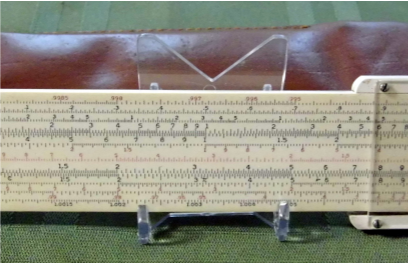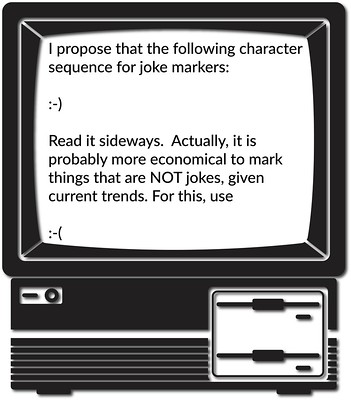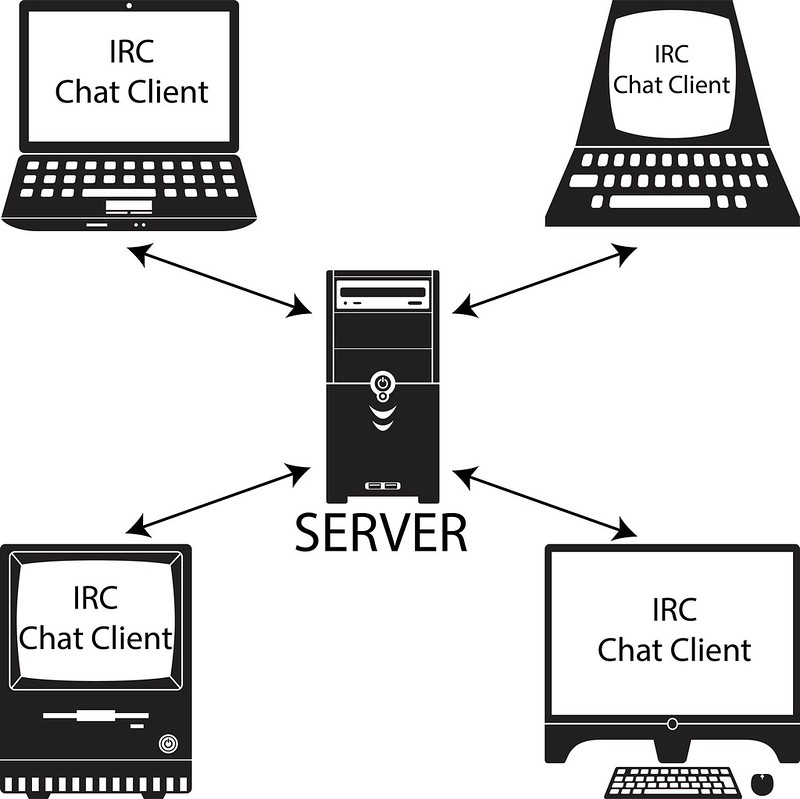12.1: Technology and Communication
- Last updated
- Save as PDF
- Page ID
- 66616

- Jason S. Wrench, Narissra M. Punyanunt-Carter & Katherine S. Thweatt
- SUNY New Paltz & SUNY Oswego via OpenSUNY
Learning Outcomes
- Explain the history of computer-mediated communication.
- Recognize some of the important figures in the creation of the Internet, the World Wide Web, and computer-mediated communication.
Since the Internet’s creation in 1969, public access to the Internet and the creation of the World Wide Web (WWW) in 1991, and the proliferation of Internet Service Providers (ISPs) through the late 1990s, the technology that shapes your life today and will shape your life tomorrow is still relatively new. Here are some relatively recent landmarks in social media sites, technology, and apps: LinkedIn (2003), iTunes (2003), Facebook (2004), YouTube (2005), Twitter (2006), iPhone (2007), Drop Box (2008), Google Docs (2009), Kickstarter (2010), Google+ (2011), Google Glass (2012), Oculus Rift (2013), and iWatch (2014). As you can imagine, just limiting this list is hard. Some of these products you’re probably very familiar with while others may be altogether new to you.
From Math to Punch Cards
Before we get started, it’s essential to understand the evolution of what we call computer-mediated communication or CMC. Although in recent years some scholars have adopted the broader term “communication and technology,” we don’t think this is necessary, because a computer of some kind is always at the center of these communicative interactions.
So, our first question should be, what is a computer. In its earliest use, “computers” referred to people who performed massive numbers of calculations by hand or using a tool like an abacus (Figure 12.1.1a) or slide rule (Figure 12.1.1b). As you can imagine, this process wasn’t exactly efficient and took a lot of human resources. The 2016 movie Hidden Figures relates the true story of a group of African American computers who created the calculations to land the first Astronaut on the Moon.1


The first mechanical ancestor of the computer we have today was created in 1801 by a Frenchman named Joseph Marie Jacquard, who created a loom that used punched wooden cards to weave fabric (Figure 12.1.2). The idea of “punch cards” would be the basis of many generations of computers up to the 1960s. Of course, the punch cards went from being wood cards to cardboard or cardstock over the course of their history. Some of the earliest statistical research in the field of communication was conducted using punchcards. As you can imagine, between 1801 and the 1960s, many people worked to advance early computer technology. Many wonderful books can introduce you to the full history of how we came to the modern personal computer.2

The 1970s saw the start of the explosion of the personal computer (e.g., the release of the Apple II line in 1977). In 1981, IBM released the IBM PC, also known as the Acorn, which ran on Microsoft DOS, which was followed up by Apple’s Lisa in 1983, which had a graphic user interface. From that point until now, Microsoft and Apple (Macintosh) have cornered the market on personal computers.
Getting Computers to Interact
One thing that we have seen is that with each new computer development is new technologies emerging that have helped us communicate and interact. One significant development in 1969 changed the direction of human communication forever. Starting in 1965, researchers at the Massachusetts Institute of Technology were able to get two computers to “talk” to each other. Of course, it’s one thing to get two computers side-by-side to talk to each other, but could they get computers at a distance to talk to each other (in a manner similar to how people use telephones to communicate at a distance)?
Researchers at both UCLA and Stanford, with grant funding from the U.S. Department of Defense Advanced Research Projects Agency (ARPA), set out to get computers at a distance to talk to each other. In 1969, UCLA student Charley Kline attempted the first computer-to-computer communication over a distance from his terminal in Los Angeles to a terminal at Stanford using a computer network. Although it had been possible for remote computers to interact with one another, scientists had to have separate computers for each remote computer they were connecting with. The 1969 breakthrough, was the creation of a system that could allow all computers to use a single network to interact.3 The first message to be sent was to be a simple one, “login.” The letter “l” was sent, then the letter “o,” and then the system crashed. So, the first message ever sent over what would become the Internet was “lo.” An hour later, Kline got the system up and running again, and the full word “login” was sent.
In the earliest years of the Internet, most people didn’t know it existed. The Internet was primarily a tool for the Department of Defense to allow researchers at multiple sites across the country to work on defense projects. It was called the Advanced Research Projects Agency Network (ARPANET). In 1973, the University College of London (England) and the Royal Radar Establishment (Norway) connected to ARPANET, and the term “Internet” was born. A year later, in 1974, a commercialized version of ARPANET called Telenet became the first Internet service provider (ISP).
Allowing People to Communicate
The early Internet was not exactly designed for your average user, so it took quite a bit of skill and “know how” to use the Internet and find information. Of course, while the Internet was developing, so was its capability for allowing people to communicate and interact with one another. In 1971, Ray Tomlinson was working on two programs that could be used over ARPANET: SNDMSG and READMAIL. From his lab at MIT, Tomlison sent a message from one computer to another computer sitting right next to it, sending the message through ARPANET and creating the first electronic email. Tomlison also forever changed our lives by introducing the “@” symbol as the separator the Internet uses when sending and receiving messages.
In addition to email, another breakthrough in computer-mediated communication was the development of Internet forums or message/bulletin boards, which are online discussion sites where people can hold conversations in the form of posted messages. Steve Walker created an early message board for ARPANET. The primary message list for professionals was MsgGroup. The number one message board that was not business related was SF-Lovers, a science fiction list. As you can see, from the earliest days of the Internet, people were using the Internet as a tool to communicate and interact with people who had similar interests.
One early realization about email and message boards was that people relied solely on text to interpret messages, which lacked nonverbal cues to aid in interpretation. On September 19, 1982, Scott Fahlman, a research professor of computer science at Carnegie Mellon, came up with an idea. You see, at Carnegie Mellon in the early 1980s (like most research universities at the time), they had their own bulletin board system (BBS), which discussed everything from campus politics to science fiction. As Fahlman noted, “Given the nature of the community, a good many of the posts were humorous, or at least attempted humor.” But “The problem was that if someone made a sarcastic remark, a few readers would fail to get the joke and each of them would post a lengthy diatribe in response.”4 After giving some thought to the problem, he posted the message seen in Figure 12.1.3. Thus, the emoticon (emotion icon) was born. An emoticon is a series of characters which is designed to help readers interpret a writer’s intended tone or the feelings the writer intended to convey. Over the years, many different emoticons were created like the smiley and sad faces, lol (laughing out loud), ROFL (rolling on the floor laughing), :-O (surprise), :-* (kiss), :-P (sticking your tongue out), :-/ (quizzical), :-X (sealed lips), 0:-) (angel), *\0/* (cheerleader), and so many others. As we’ve discussed previously in this text, so much of how we understand each other is based on our nonverbal behaviors, so these emoticons were an attempt to bring a lost part of the human communicative experience to a text-based communicative experience.

Asynchronous Communication
Some technologies are what we call asynchronous, a mediated form of communication in which the sender and receiver are not concurrently engaged in communication. When Person A sends a message, Person B does not need to be on the computer at the same time to receive the message. There could be a delay of hours or even days before that message is received and Person B responds. In this case, asynchronous messages are akin to letter writing.
We still engage in a wide range of asynchronous CMC. Some common forms of asynchronous communication today include email, texting, social media posts, and classroom discussion boards. Think about your own CMC behavior. What asynchronous methods for CMC do you engage in daily?
Synchronous Communication
Let’s switch gears for a bit and talk about the history of synchronous communication on the Internet. As the Internet grew and speed and infrastructure became more established, synchronous CMC was developed, a mediated form of communication in which the sender and receiver are concurrently engaged in communication. When Person A sends a message, Person B is receiving that message in real time, like they would in a face-to-face (FtF) interaction.
The first synchronous mode of communication was the chatroom. In 1988, Jarkko “WiZ” Oikarinen wrote the code for the first Internet Relay Chat (IRC) client and server at the University of Oulu, Finland. IRC was initially started as a system to replace an existing BBS, but WiZ realized that he had something completely different. With IRC, individuals from around the world could login using an IRC Chat Client (software on their computer), which would allow them to access a server elsewhere in the world to interact with people in real time (Figure 12.1.4). The invention of IRC led to the proliferation of chatrooms throughout the 1980s and 90s.

New technology was also developed through the European organization Groupe Speciale Mobile (GSM). The goal of the GSM was to create protocols for second-generation global cellphone networks. One of the protocols that was created was the Short Messaging Service (SMS). The concept was developed in 1985 by Friedhelm Hillebrand and Bernard Ghillebaert, but the first SMS message wouldn’t be sent until 1992. SMS originated from the radio telegraphy in radio memo pagers using standardized phone protocols, and was later defined as part of the Global System for Mobile Communications series of standards in 1985. The “short” part of SMS refers to the maximum length of the messages that could be sent at the time: 160 characters (letters, numbers, or symbols in the Latin alphabet). If you haven’t figured it out yet, the system created by Hillebrand and Ghillebaert is the system most of you use every day to send text messages. Although texting can be either asynchronous or synchronous, historically it was one of the earliest technologies to facilitate real-time (synchronous) online communication.
The World Wide Web
Our last major invention that indeed was groundbreaking came about in 1990. Tim Berners-Lee, a scientist working for Conseil Européen pour la Recherche Nucléaire (CERN), had an idea to help capture information from the people who worked at CERN. The typical length of time someone spent conducting research at CERN was only two years, so that meant a lot of new people coming and going without a way to capture what was being done. As Berners-Lee noted, “The actual observed working structure of the organisation is a multiply connected ‘Web’ whose interconnections evolve with time.”5 Furthermore, “The technical details of past projects are sometimes lost forever, or only recovered after a detective investigation in an emergency. Often, the information has been recorded, it just cannot be found.”6 You see, Berners-Lee realized that so much information is learned on the job and then leaves with the people as they leave the job. Berners-Lee proposed a new system for keeping electronic information. After getting some initial positive feedback, Berners-Lee and Robert Cailliau wrote a management report explaining hypertext:
HyperText is a way to link and access information of various kinds as a Web of nodes in which the user can browse at will. It provides a single user interface to large classes of information (reports, notes, data-bases, computer documentation and on line help). We propose a simple scheme incorporating servers already available at CERN... A program which provides access to the hypertext world we call a browser...7
CERN was not really concerned with the Internet as its primary scope and emphasis, so CERN and Berners-Lee agreed to release the source code for the World Wide Web (WWW) to the world in April 1993. In 1994, Berners-Lee left CERN and took a job at MIT where he created the International World Wide Web Consortium (W3C) to develop common standards for communication on the WWW. W3C still exists today, and the WWW celebrated its 30th birthday on March 10, 2019. The 5th variation of the hypertext markup language (HTML) created by the W3C is currently in use. You’re probably using HTML5 daily and don’t even realize it. As the W3C notes, “HTML5 contains powerful capabilities for Web-based applications with more powerful interaction, video support, graphics, more styling effects, and a full set of APIs. HTML5 adapts to any device, whether desktop, mobile, tablet, or television.”8
Key Takeaways
- Starting with the invention of the Internet in 1969, computer-mediated communication has evolved over the years as technology has advanced.
- Many important figures have helped create computer-mediated communication as we know it today. Some of the key players include Ray Tomlinson (inventor of email), Scott Fahlman (creator of emoticons/emojis), Jarkko “WiZ” Oikarinen (inventor of chatrooms), Friedhelm Hillebrand and Bernard Ghillebaert (creators of text messaging), and Tim Berners-Lee (inventor of the World Wide Web). These are just a handful of the many women and men who had a part in the development of computer-mediated communication.
Exercises
- When you look back at your own life, which computer-mediated technologies do you remember interacting with? Think back to your earliest experiences with CMC. How as your own CMC behavior and use of technology evolved over time.
- Check out the World Wide Web Consortium’s (W3C) website (www. w3.org/) and see what projects they’re working on today. Why is the W3C still relevant today?

